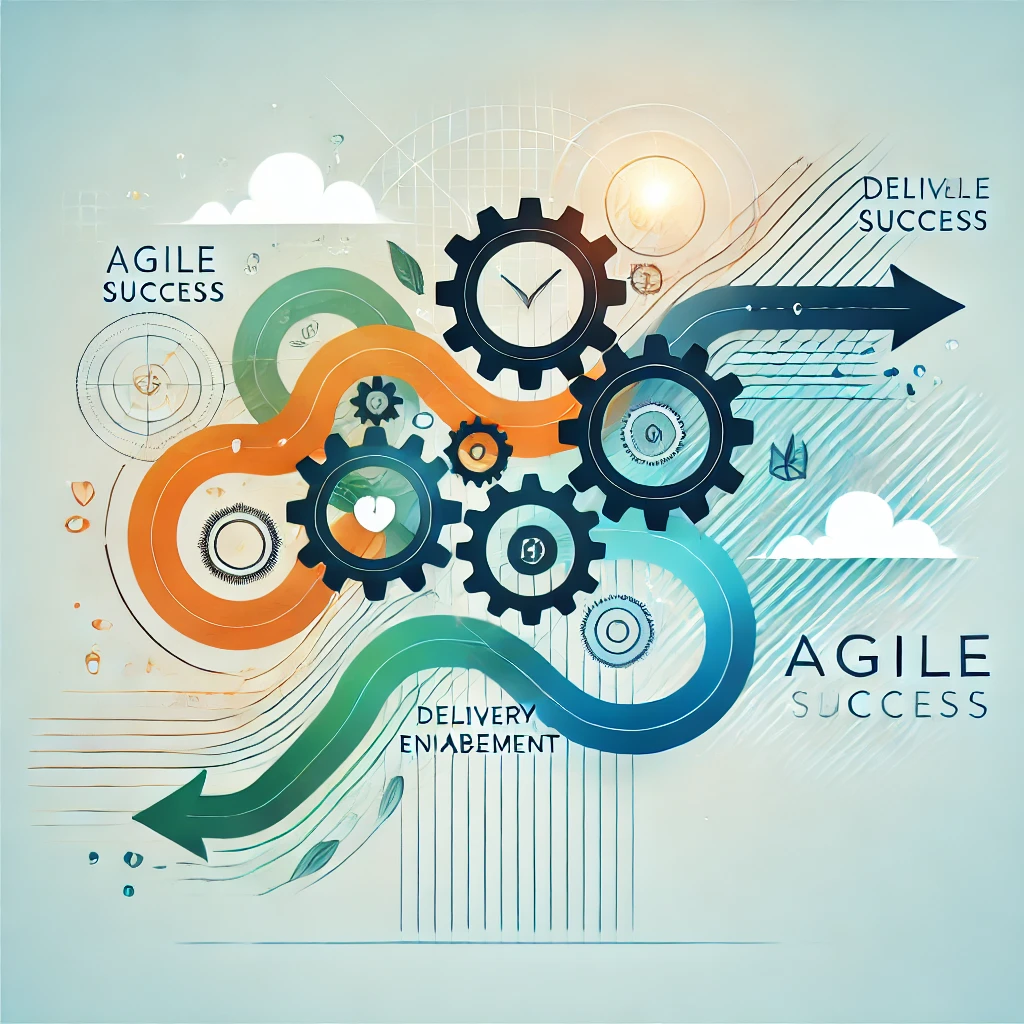Agile was supposed to be the answer—the cure-all for the inefficiencies, silos, and delivery headaches that plagued traditional ways of working. For many teams, it’s delivered on its promises: better collaboration, faster iterations, and more adaptability. But for others, Agile alone hasn’t been enough. Without the right support structures, teams still struggle to meet their goals, align with stakeholders, and deliver real value.
That’s where delivery enablement comes in. It’s the missing puzzle piece—the framework that ensures Agile isn’t just a buzzword but a strategy for delivering meaningful outcomes. If Agile is the “what” and the “why,” delivery enablement is the “how.”
Agile Alone Won’t Save You
Agile frameworks are often implemented with the best intentions, but they frequently fall short of their potential. Why? Because organizations focus on the process rather than the outcome. They obsess over Scrum ceremonies, sprint lengths, and Kanban boards, all while ignoring the real goal: delivering value.
Let’s be honest—too many teams are just “doing Agile.” They follow the motions, tick the boxes, and check off tasks, but they’re missing the bigger picture. Agile is supposed to empower teams to adapt, focus on what matters, and deliver incrementally. But without delivery enablement, it often devolves into a rigid checklist that does little to improve outcomes.
What Is Delivery Enablement?
Delivery enablement is about creating the conditions for Agile to thrive. It’s not a framework or a process—it’s a mindset and a toolkit. It ensures teams have the resources, clarity, and collaboration needed to succeed. While Agile provides the structure, delivery enablement focuses on execution.
Think of it as the engine that powers Agile. Without delivery enablement, Agile teams risk spinning their wheels—going through sprints, holding retrospectives, and creating backlogs without ever delivering the value they promised.
The Key Principles of Delivery Enablement
To truly enable delivery, organizations need to embrace key principles that align with Agile values while filling in the gaps Agile frameworks often leave behind:
1. Collaboration Over Silos
Agile talks a lot about cross-functional collaboration, but delivery enablement makes it happen. It ensures that teams communicate effectively, share knowledge, and align on goals.
2. Data-Driven Decision-Making
Agile encourages adaptation, but how do you know what to adapt? Delivery enablement brings data into the equation—metrics like cycle time, throughput, and work-in-progress provide actionable insights that guide decision-making.
3. Transparency for Alignment
Agile frameworks emphasize visibility, but delivery enablement ensures transparency at every level—team, program, and organization. With clear communication and real-time updates, stakeholders stay informed and aligned.
4. Focus on Value Delivery
Agile often gets bogged down in tasks and outputs. Delivery enablement shifts the focus back to outcomes: delivering value to customers, stakeholders, and the business.
5. Continuous Improvement
Delivery enablement reinforces the Agile principle of iteration. It’s not about achieving perfection—it’s about learning, adapting, and improving with every sprint.
Why Delivery Enablement Matters
Without delivery enablement, Agile frameworks can feel like hollow rituals. Teams can check every box and still fail to deliver value. But with delivery enablement in place, Agile becomes more than a methodology—it becomes a powerful tool for delivering outcomes.
Here’s why it matters:
• It Creates Alignment: Delivery enablement ensures that everyone—from individual contributors to executives—understands the goals and how their work contributes to them.
• It Drives Predictability: Data-driven insights help teams forecast delivery timelines, identify risks, and address bottlenecks before they become roadblocks.
• It Empowers Teams: By removing barriers and providing clarity, delivery enablement allows teams to focus on doing their best work.
• It Amplifies Value: Agile is about delivering value incrementally, and delivery enablement makes sure that value is realized—not lost in translation.
Bridging the Gap Between Agile and Execution
The truth is, Agile alone isn’t enough. It’s a great starting point, but it needs delivery enablement to reach its full potential. Together, they create a powerful combination: Agile provides the framework, and delivery enablement ensures it’s executed effectively.
So, if you’re feeling frustrated that Agile hasn’t delivered the results you expected, don’t give up. Look at how delivery enablement can fill the gaps, unlock your team’s potential, and supercharge your success.
Agile is the spark, but delivery enablement is the fuel. Together, they can drive the outcomes you’ve been striving for.
What’s your take on delivery enablement’s role in Agile success? Have you seen it in action, or do you think Agile frameworks alone are enough?
Share your thoughts in the comments below, share this post with your network, and check out our related blog on True Agility vs. PMI Agile Merger: What You Need to Know.


Leave a Reply